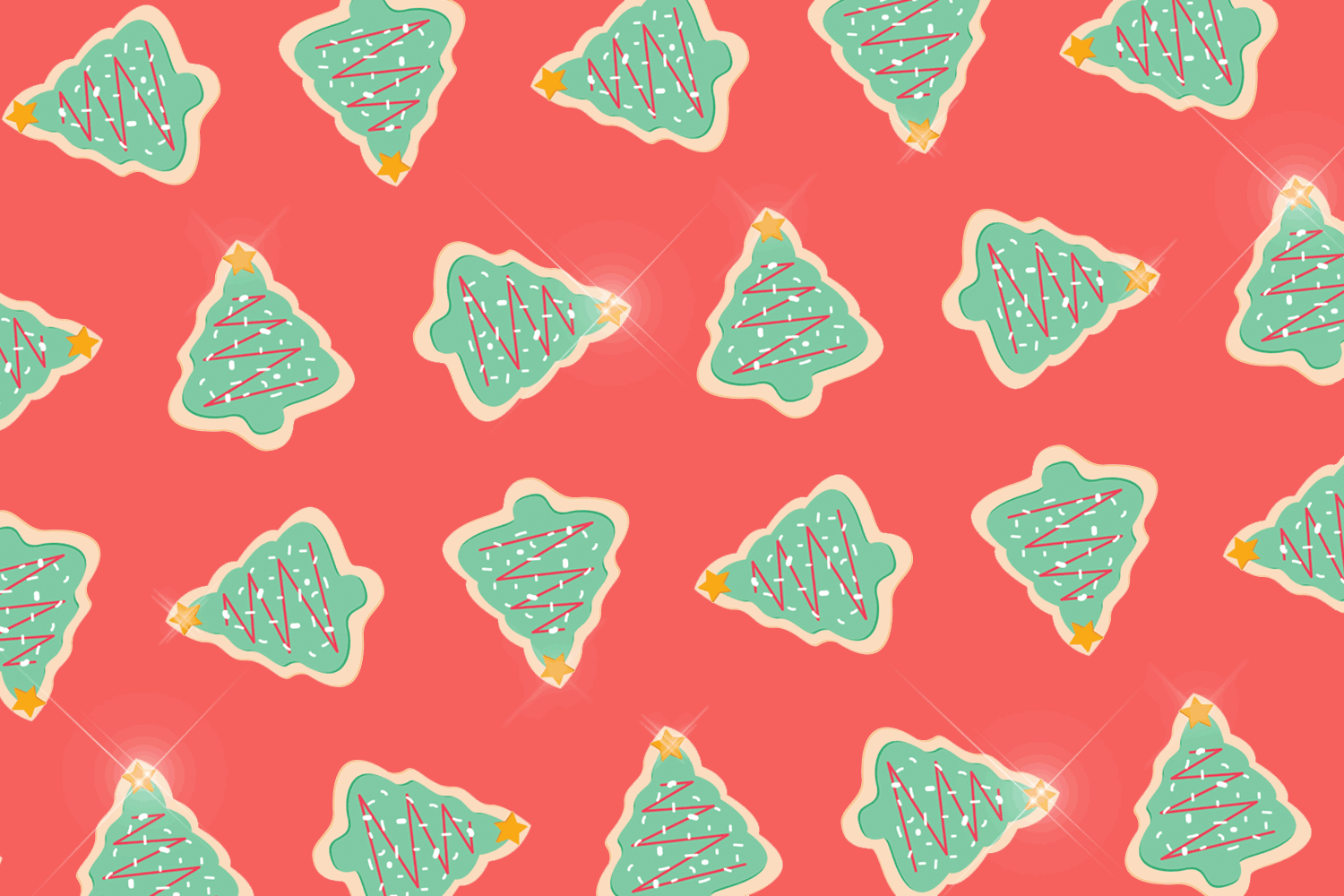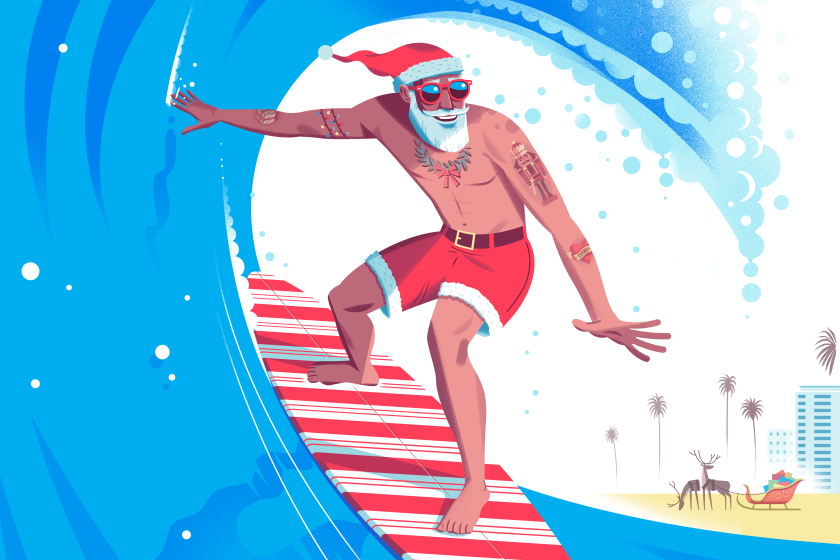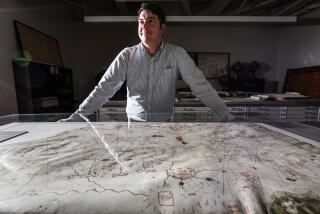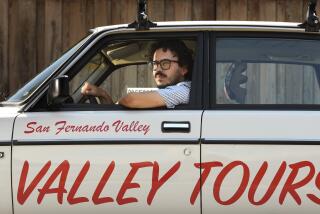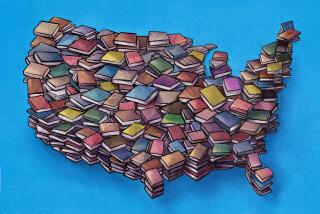Mapmaker James Nieheus is an icon in the skiing world
More than once in my several decades of skiing in the West, I’ve gotten lost on a mountain. And many times, I’ve pulled out my James Niehues trail map to get back to a lift or the resort’s lodge. The watercolor maps, which are also posted in large scale around resorts, have guided countless skiers and snowboarders over the years since the 73-year-old began painting them in 1987.
Niehues (pronounced “Nee-hews”), who lives outside Denver, has created hundreds of maps for ski areas around the country, including more than a dozen resorts in California, such as Mammoth Mountain, Squaw Valley and Heavenly; at least two in South America’s Andes; more than a dozen in Canada; six in New Zealand; and one in Serbia. He was inducted into the U.S. Ski and Snowboard Hall of Fame this year for his remarkable artwork on maps that many skiers use once and throw away.
Now Niehues, who has been called the “Rembrandt of snow,” has published a hefty coffee table book with a collection of nearly all of his hand-painted maps. “James Niehues: The Man Behind the Map” was launched as a Kickstarter campaign, which attracted donations from 5,000 people.
He got his start in the world of art when his mother bought him an oil painting set while he was recovering from an illness during his freshman year in high school. Over the decades, his maps have gained appreciation as artwork in their own right. They’ve been shown in at least one New York City gallery, and one made the cover of “Mind the Map,” a 2016 collection of illustrated cartography sold in art museums.
Start shopping for holiday gifts early, writes columnist Chris Erskine. Try decorating a cactus instead of a typical Christmas tree. Explore local holiday pop-ups and craft fairs.
I’ve kept some of his maps from my trips and have taken them out from time to time to muse over runs down slopes. I spoke with him after the book was released about his craft.
Did you grow up skiing?
No, I was raised on a hog farm outside Loma, Colo., not far from the Utah border. I spread a lot of pig manure on fields during my youth, enough to know I didn’t want to do that for a living. I went to Mesa State College in Grand Junction for a year. I didn’t start skiing until I joined the Army in the late 1960s and was stationed in Europe. I first skied on a small resort in the Austrian Alps. When I got back to Colorado, I skied at Powderhorn, near Grand Junction, and fell a lot. I walked down the slope and pretty much gave it up for the next 15 years.
How did you get into painting ski trail maps? That seems like such a tiny niche market.
It is. There aren’t many people doing it. After the service, I worked in a print shop and then for an ad agency. Then I moved to Denver and struggled as a freelance artist. I looked up Bill Brown because I admired his ski resort maps. He liked my portfolio, and he turned over a small job to me at Winter Park in Colorado. That got me started, and the first contract I got on my own was for the Boreal and Soda Springs resorts on Donner Summit near Lake Tahoe. I also started doing maps and illustrations for Snow Country Magazine.
How did you learn to draw maps?
I’m pretty much self-taught. But Bill Brown was my mentor, in the beginning.
When did you get back on the slopes?
After I started making maps. I got to be an intermediate [skier] in my prime. I had one instructor at a Colorado resort who told me, after he’d picked me up for the fourth time, that he thought the guy who painted all those maps would be able to ski better. But the snow was choppy, and I couldn’t handle it. [Laughs.] I don’t ski much anymore, but I’m still hiking a lot.
Welcome to our comprehensive gift guide for the 2019 holiday season. This list encompasses the most popular and best gifts for everyone in your life.
How do you create your maps?
I love photography and I shoot a lot of pictures of the mountain. I’ve also used topographical maps and even satellite images. If the budget allows, I’ll fly over the slopes in a small plane and get to know the resorts as best I can. Then I’ll do a series of sketches and, after I get the approval, it takes two or three week to paint a map, adding shadow, detail, clouds and things like that.
What were you paid for your artwork, then and now?
It depended on the size of the resort. ... I was getting a minimum of $1,800 for a small area, $6,500 for a midsize resort and more for a large one. But when computers came in, the pay flattened, and it was harder to make a living. ... Now, I’d say I get around $15,000 for a really big resort. But the other rates, unfortunately, haven’t gone up much over time.
What do you think of computer-generated maps?
There is no comparison to what I do. Well, OK, on one basic level they are similar because they are both tools for people to know where they are. But I create a mood with my maps because of the way I interpret the terrain and the trees and the shadowing. When you look at a hand-painted map, you can sense what the artist is portraying.
Have computers threatened your livelihood?
Around 2000, when they came on the scene, times got slow and I lost quite a few jobs. It was tight then and I had to look for other work. But I got through, and the ski areas came back around. In a good year, I’d paint 20 to 25 maps. I sign my work, because the resorts object if I don’t. I paint every individual tree, but I have a technique that I use to put down a background of trees pretty quickly.
Do you have a favorite ski resort?
Not really, but I am kind of fond of Powderhorn, because that’s where my kids learned to ski.
How long do you think you’ll continue to do this?
As long as I enjoy it. I just finished up a new version of Sun Peaks in British Columbia. And this past summer, I painted new maps for Ski Santa Fe in New Mexico, Mount Bachelor in Oregon, Sugar Mountain in North Carolina and Wolf Creek in Colorado near Durango, Colo.
Info: “James Niehues: The Man Behind the Map” costs $90; maps of individual resorts, $40 each. Order at JamesNiehues.com. Niehues will be signing books Dec. 7 at the Ski Dazzle Show at the Los Angeles Convention Center.
More to Read
Sign up for The Wild
We’ll help you find the best places to hike, bike and run, as well as the perfect silent spots for meditation and yoga.
You may occasionally receive promotional content from the Los Angeles Times.
